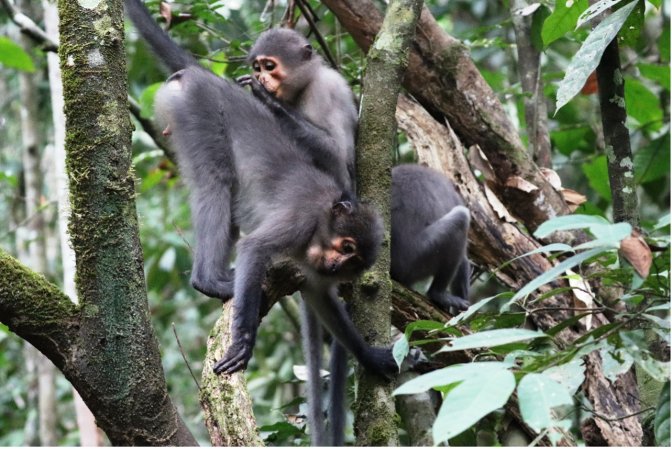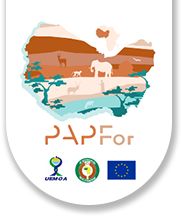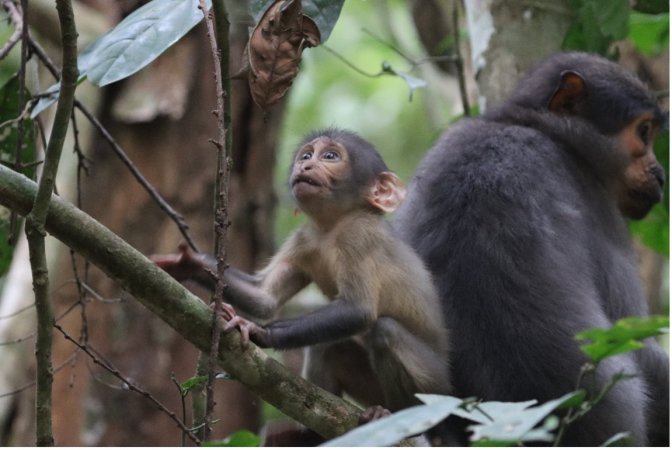Home / Guinean forests / Characteristics / The biodiversity / Species identity card / The sooty mangabey
The sooty mangabey
The sooty mangabey (Cercocebus atys) is a small monkey in the cercopithecus family. It is easily recognised by its entirely grey coat, which is slightly lighter on the belly. Males weigh between 8 and 10 kg, compared with 5 to 7 kg for females.

Unlike most other species of monkey in Guinean forests, this mangabey frequently feeds on the ground. It eats mainly fruit, seeds and nuts, with a few invertebrates rounding out its diet. It is a very sociable species, living in groups of up to a hundred individuals, with several breeding males and females. A group’s home range is around four to seven square kilometres, with overlaps between different groups. Young males tend to leave their natal group, while females tend to stay within their group. Females give birth to their first offspring at around five years of age, after five and a half months gestation. Sooty mangabeys can live to the age of 18.
The sooty mangabey is endemic to the forests of Upper Guinea. Its range extends from the Casamance River in Senegal to the Sassandra River in Côte d’Ivoire. It can therefore be found in the five landscapes supported by PAPFor in Upper Guinea. It is mainly found in dense rainforests, but can also be found in secondary forests. It is particularly fond of marshes and palm forests.
It is possible to habituate the species to the presence of humans, which represents significant potential for tourism. In Taï National Park, for example, a group has been habituated by Wild Chimpanzee Foundation (WCF) and is followed by trackers every day, from morning till night, so that tourists can be taken early in the morning to see them, taking all the necessary health precautions, including wearing a mask covering the mouth and nose, to prevent the spread of disease.


